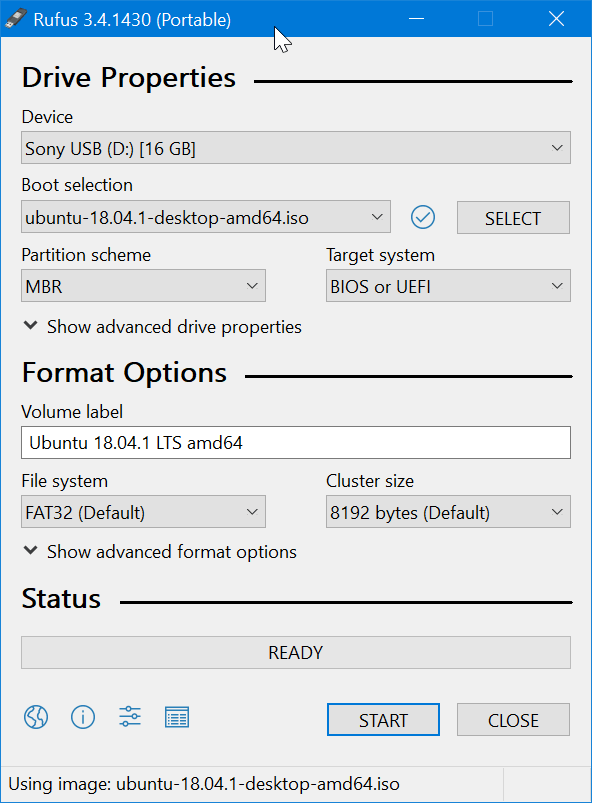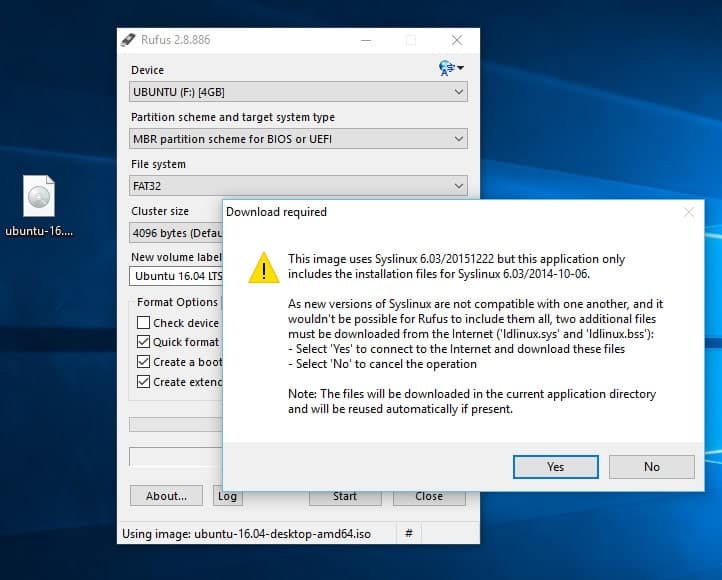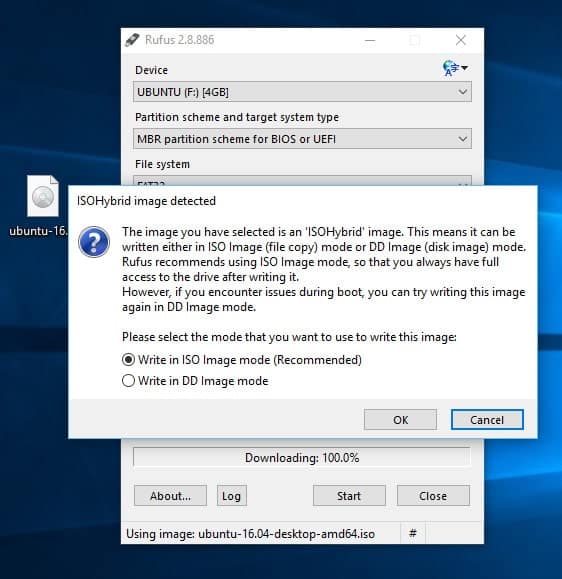How to Create Ubuntu 18.04.2 Bootable USB in Windows 7,8 or 10

If you are on Windows 10, looking for Create an Ubuntu bootable USB, Here this post is for you. Yes, you can create Ubuntu bootable USB right from the Command Prompt without using any third-party utilities, Also you can use the popular Rufus software to easily prepare the bootable USB of Ubuntu on Windows 10. Here follow the steps below to prepare the bootable USB of Ubuntu on Windows 10.
You have required the following things to create Ubuntu bootable USB in Windows systems.
- USB Drive (At least 4GB)
- Ubuntu ISO
- Rufus software
- A Windows System to create boot disk
Create Ubuntu bootable USB Windows 10
- First of all Download the Ubuntu operating system from its official website.
- Here this direct link to download the latest Ubuntu 20.04.4 LTS from the official site.
- Then Get the latest version of Rufus from its official page. Note that a portable version of Rufus is also available, and we recommend you download the same if you don’t intend to install it on your PC.
- Launch Rufus, Select the connected USB drive from the Device drop-down box.
- In the Boot selection field, click on the Select button, and browse to the Ubuntu ISO image file that you downloaded previously.
- Select the Partition scheme as MBR (select GPT if you are using the same) and target the system as BIOS or UEFI (select this if you are not sure about the system).
- Finally, click on the START button.

Note: If you get the following Download required dialog, click Yes button to download the required files. It will download two small files.

Next, you might get the following ISOHybrid image detected dialog. If you get one, select the recommended Write in ISO Image mode option and then click on the OK button.

Finally, you will get the format confirmation dialog. Click OK button to format the USB drive and begin transferring Ubuntu ISO file contents to the USB drive.
Depending on your PC’s configuration, Rufus might take 5 to 20 minutes to complete its job. Once done, you will see the READY message. now safely remove the USB. As said earlier, you can use this bootable USB as live USB as well.
